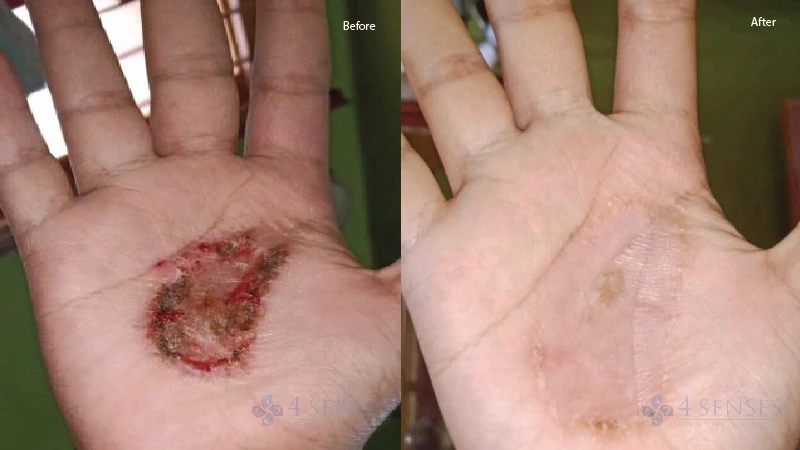
Eczema / Dermatitis Treatment in Bangalore
Eczema means “boil out” . The patches of skin become inflamed, itchy, red, cracked, and rough. It begins as red, raised tiny blisters containing a clear fluid atop red, elevated plaques. When the blisters break, the affected skin will weep and ooze.
Stages and Symptoms
Depending on the stages the eczema is classified into basically 3 types which present with different features
- Acute eczema – redness , itching, edema (swelling), red, raised tiny blisters containing clear fluid
- Sub acute eczema – lesser edema (swelling), scaling and crusting
- Chronic eczema – Dryness , darkening and thickening of skin
Types of Eczema
Atopic Dermatitis
Atopic dermatitis, often present in childhood and can range from mild to severe. A child is more likely to develop atopic dermatitis if one of the parents has had it. Children with atopic dermatitis have a higher risk of food sensitivity. They are also more likely to develop asthma and hay fever. People with atopic dermatitis usually experience flare-ups, where the eczema gets worse for a time.
Contact Dermatitis
People experience a skin reaction when they come in contact with certain substances like cement, fabric softeners, hair dyes, acids, alkalis or due to allergic reactions caused by particular substances like glues, certain materials, plants, makeup, nail polishes, creams etc.
Stasis dermatitis
It commonly appears on the lower aspect legs, who have dilated leg veins. Most commonly seen in adults and elderly who have a history of prolonged standing at work place for several years. The skin over the ankles get inflamed and irritated due to pigment deposition from the dilated veins.
Seborrheic dermatitis
Seborrheic dermatitis is a common skin condition that mainly affects the scalp. It causes scaly patches, red skin and stubborn dandruff. Seborrheic dermatitis can also affect oily areas of the body, such as the face, sides of the nose, eyebrows, ears, eyelids and chest.
Xerotic eczema
Commonly seen in the older age group. It is also known as “winter itch” and is seen in extremely dry skin. It worsens in dry winter weather. Hands, legs and trunk are mostly affected. Also seen in people who are on certain medications.
Treatment
Detailed history and a thorough clinical examination are essential to arrive at the diagnosis.
Topical therapy involves steroids , antibiotics, topical immunomodulators, anti inflammatory medications etc. These are given based on the type of eczema, morphology of lesion, clinical features, site of involvement, severity of condition and associated secondary infections.
Oral medications include Systemic immunosuppresants, systemic steroids, interferons etc. LASERS and phototherapy are other modalities of treatment. etc. These are given depending on the severity of condition and underlying health condition of the patient.
Doctors at 4 Senses Clinic take history patiently, examine the patient thoroughly and diagnose the condition with minimal and necessary investigations. After finding out the root cause of problem, they provide accurate treatment. The doctors also counsel on how to prevent further recurrences. If you are looking at treatment for eczema, contact Call:6366494494
